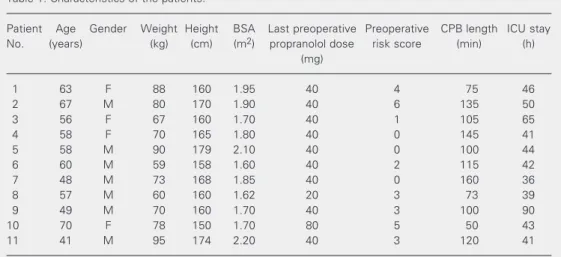Cardiopulmonary bypass alters the pharmacokinetics of propranolol in patients undergoing cardiac surgery
Texto
Imagem


Documentos relacionados
Resumo : A pesquisa cientifica, geralmente se insere no contexto humano como uma curiosidade dos porquês dos acontecimentos e se destaca por ser um dos processos de construção
Possibly, other factors are associated with postoperative worsening of gas exchanges observed in the first postop- erative day in addition to the perfusion of non-aerated lung
In conclusion, the study indicates that intraoperative use of tranexamic acid in pa- tients undergoing coronary artery bypass grafting with cardiopulmonary bypass is ef- fective
In conclusion, RAP can effectively reduce the hemodilution in CPB when using less or not using any banked blood, while meeting the intraoperative perfusion conditions, and
Objectives: To assess the frequency of occurrence and clinical manifestations of the systemic inflammatory response syndrome after cardiopulmonary bypass (SIRS-CPB) in
Resection of the cardiac tumors was performed through a median sternotomy with cardiopulmonary bypass in all patients except three: patient 9 in benign, and patients 5 and 9
The aim of this study was to report the experience with the technique of vacuum assisted venous drainage in cardiac surgery with cardiopulmonary bypass and verify the
In conclusion, our results showed that in low-risk patients who underwent cardiac surgery with cardiopulmonary bypass the method used to interrupt invasive mechanical ventilation,